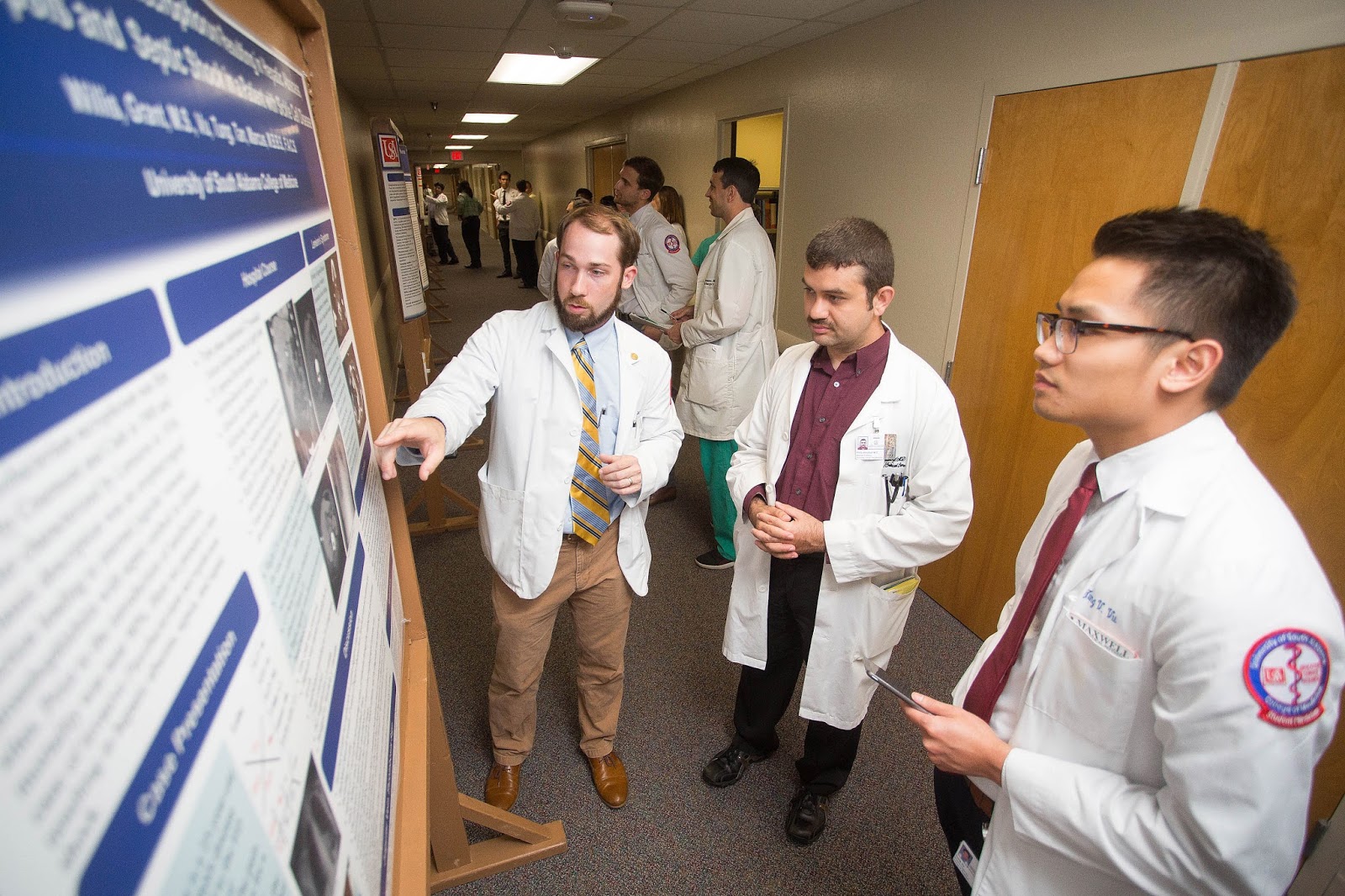Thursday, June 30, 2016
Third-Year Medical Students Host First M3 Case Report Symposium
Rising fourth-year USA medical students Grant Willis and Parker Mullen worked together to organize the symposium and offer medical students the opportunity to conduct and present a case study. For many medical students, the symposium marked the first time presenting research.
Together, rising fourth-year USA medical students Rajesh Paladugu and Nicholas Tinker presented an unusual obstetrics and gynecology case. Their case featured a patient who suffered from an ectopic pregnancy embedded in a cesarean section scar, which is a condition that accounts for less than one percent of all ectopic pregnancies, according to Tinker.
Paladugu and Tinker both expressed enthusiasm for the symposium and the opportunities it created for them. “In order to present a case you usually have to travel to a conference,” Paladugu said. “This symposium was in our backyard, and showing our research will help make us more competitive.”
Tinker appreciated the feedback on their presentation and noted the importance of effective visual communication. “We made a few mistakes, and people came and pointed it out. We were in a stress-free environment where people helped us,” Tinker said.
The symposium was also an opportunity for students to showcase independent projects.
Under the guidance of Dr. Benjamin Estrada, professor of pediatrics and assistant dean for medical education at the USA College of Medicine, two USA medical students developed a history of present illness (HPI) template to help overcome language barriers between physicians and Hispanic patients with limited English proficiency.
Umair Savani, a rising fourth-year USA medical student, was working in a newborn nursery during his pediatrics rotation when he encountered a non-English speaking mother whom had recently given birth. The staff suspected the new mother might have an infection.
“I minored in Spanish and studied abroad, but I consider myself to have a medium-level Spanish proficiency,” Savani said. “As it turns out, the mother did have an infection, and she was treated.” However, he said he did not feel confident that his translation was completely accurate.
“Our research found that minor errors occur through mistranslation 50 percent of the time, and major errors occur 14 percent of the time,” Savani continued.
Savani realized the need to improve communication between physicians and Alabama’s growing Hispanic community. He collaborated with rising second-year USA medical student Trevor Stevens and created a HPI template. The template had Spanish questions written on the left and the identical English translation on the right side of the template. With Dr. Estrada’s help, Savani and Stevens plan to distribute the pilot template to pediatric clinics accompanied with satisfaction surveys to gauge the effectiveness of the template. Eventually, they hope to distribute to other outpatient clinics including surgery and orthopaedics.
Savani and Stevens also hope the template will allow physicians to immediately understand symptoms and reduce the opportunity for mistranslation. “We want to reduce the time physicians spend discovering a diagnosis in clinic, and give physicians more time to talk with the patient and hopefully increase patient compliance,” Savani said. Savani also said that he and Stevens are developing specific templates for other common diseases such as Type 2 diabetes, fever and urinary tract infection.
Willis and Mullen consider the symposium a “great success” and hope the symposium will generate more interest in research among medical students at the USA College of Medicine.
“Mullen and I worked on the symposium all semester and managed to put it together in just a few months,” Willis said. “Forty-five percent of the class voluntarily participated in this symposium, and we hope some of these cases may lead to additional studies and research.”
Click here to view more photos from the symposium.

